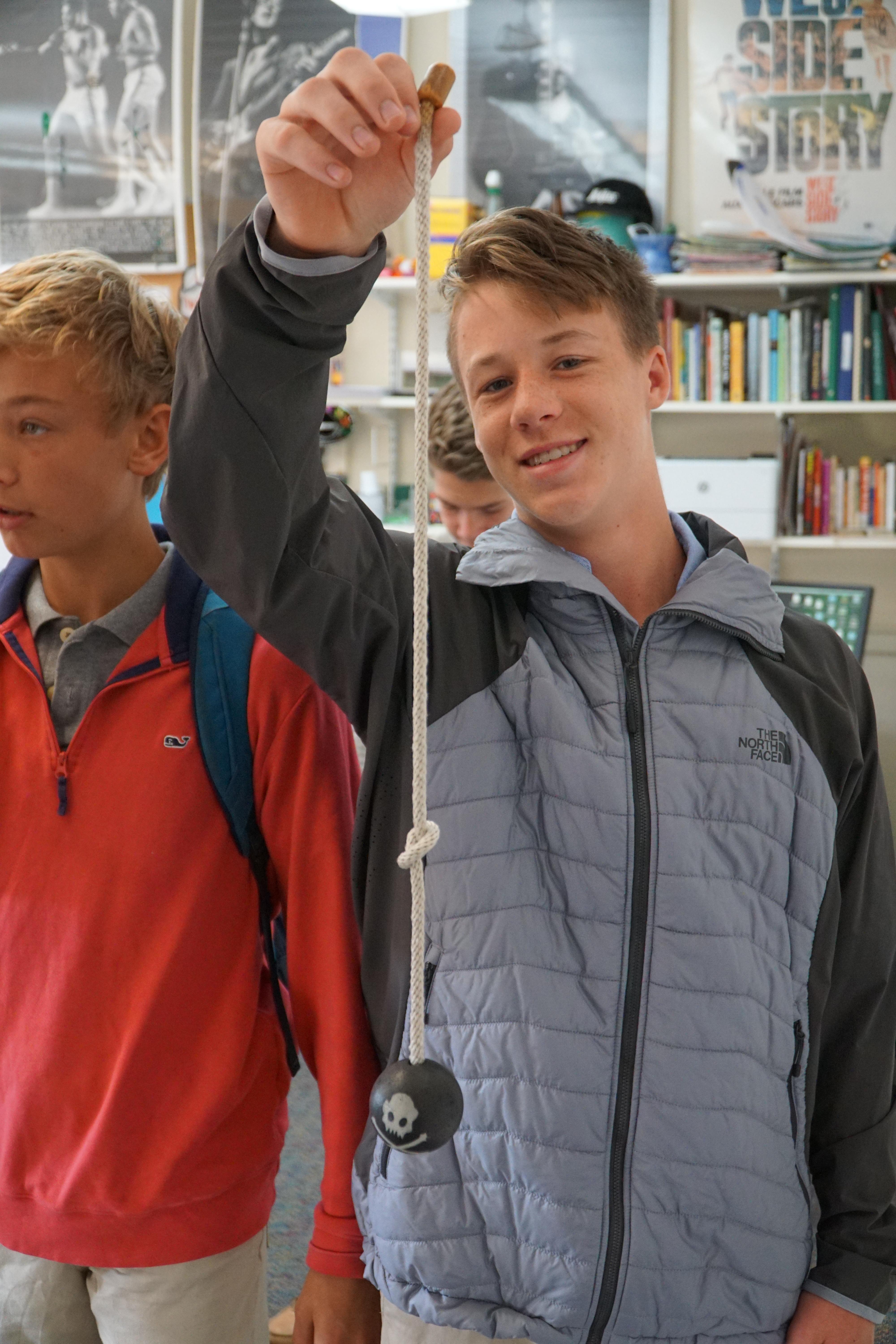Having taught in a middle school for almost 40 years, I’m embarrassed to admit how long it took me to realize that my students needed time to regroup between classes.
A few years ago my classroom was across the hall from Joel Harms’s geometry class. I would hear familiar words from my high school days like “opposite interior angles” or “side angle side” wafting across the hall. My days of geometry, the only mathematics I could do, came back to me. Solving a geometric problem was much like doing a puzzle. I could picture what the end result would be and created a way to get there. When looking at an algebraic equation, I didn’t have a clue as to where I was going. Finding my way around a sentence came much more naturally.
It was eight feet from Joel Harms’s door to mine. The boys would cross those eight feet into the land of English class. To make every minute count, I would quickly launch into a wonderful discussion on gerund phrases or the uses of dependent clauses. I remember looking out into the class one day and telling myself that these guys are still digesting “side angle side” and that they hadn’t even begun to think about gerund phrases. I realized then that it would take a few minutes for the dendrites and neurons in their brains to let go of geometry and start to connect with some facets of English grammar. They needed to have a “buffer zone” or “down time,” a time to clear their minds, between their geometry class and my English class. I had read in many “effective teacher” books that I should give my students a problem to solve as they came in to the classroom, sort of a warm-up exercise. “Pick out a gerund phrase from a sentence written on the board,” for example. This was meant to keep them busy before the great lecture started. I thought there just had to be a better and more fruitful way to use this time.
One evening I was watching “Giant,” the great Texas epic starring James Dean. In one of his many great scenes he is carrying a rope with a small ball attached at the end. After he tells all of the big shots that he won’t sell them his small piece of land, he walks out, but before he goes out the door, he turns back to face the gentlemen and flips the ball up. When it comes down, it has magically made a knot in the rope. A day or two later I was in a toy store and saw the same ball-and-rope trick and picked one up. I couldn’t make the knot, so I took it to my classroom to see if any of my students could duplicate James Dean’s magic. Some figured it out quickly and some, like me, were pretty hopeless. I soon started making my own version of the game with a yard of nylon line and a small rubber ball at the end and took it to my classroom. From that point on as soon as the boys came in the room from their geometry class, they would head straight to the ball and rope. They soon started keeping track of how many knots they could make in a row.
The ball and rope was such a success that I thought of another game, which I had had as a child: the swing-ring game. The game consists of a brass ring on a string on one post and a small hook on another. I proceeded to make one of these out of two pieces of 15” PVC pipe connected at right angles with a small wooden base, and I took it to school. This, too, became extremely popular. The five minutes I allotted my students to play these games as they entered gave them plenty of time to get “side angle side” off their minds. When I was ready to begin class, the games were quickly put away, ready for the next day. The 5 minutes I gave them at the beginning of the period to try their hand at the two games made the next 35 minutes more productive than ever. After clearing their minds, the boys were all ears waiting for my fascinating presentation of gerund phrases. I now use the first five minutes for these games for all of my classes.
I still cannot make the knot with the ball and rope, but one of my students did 100 in a row. He could have kept going, but we had dependent clauses to tackle.

